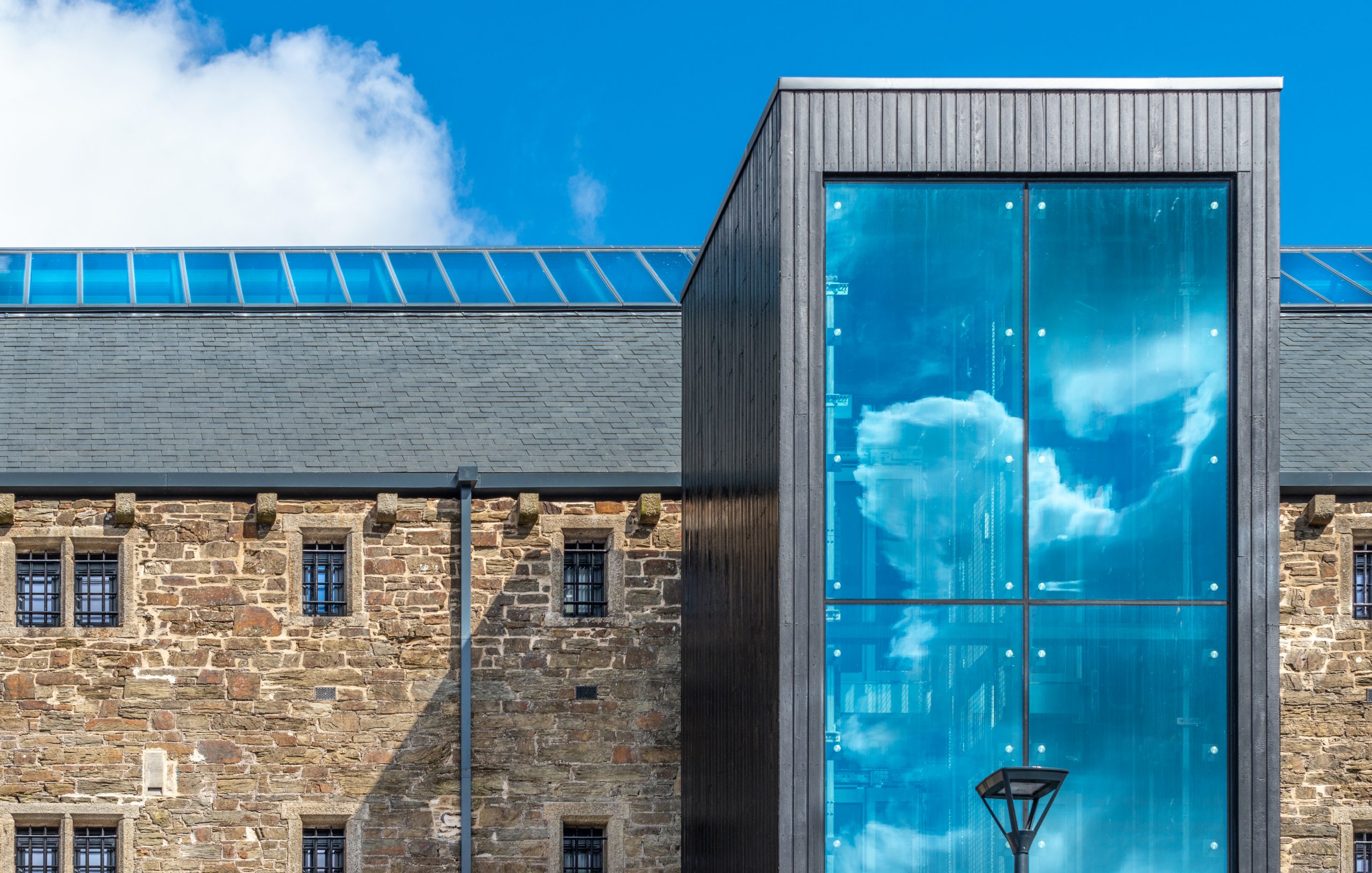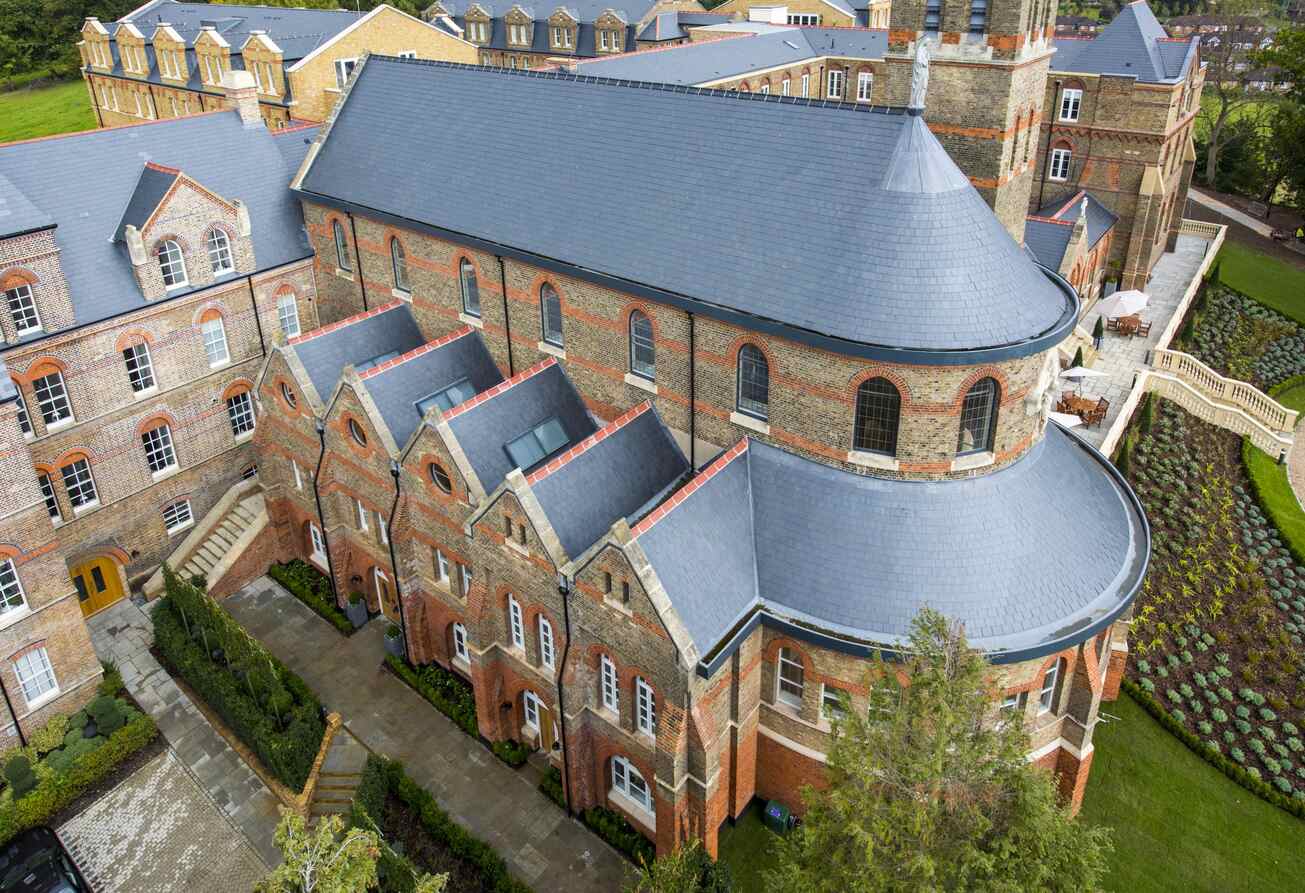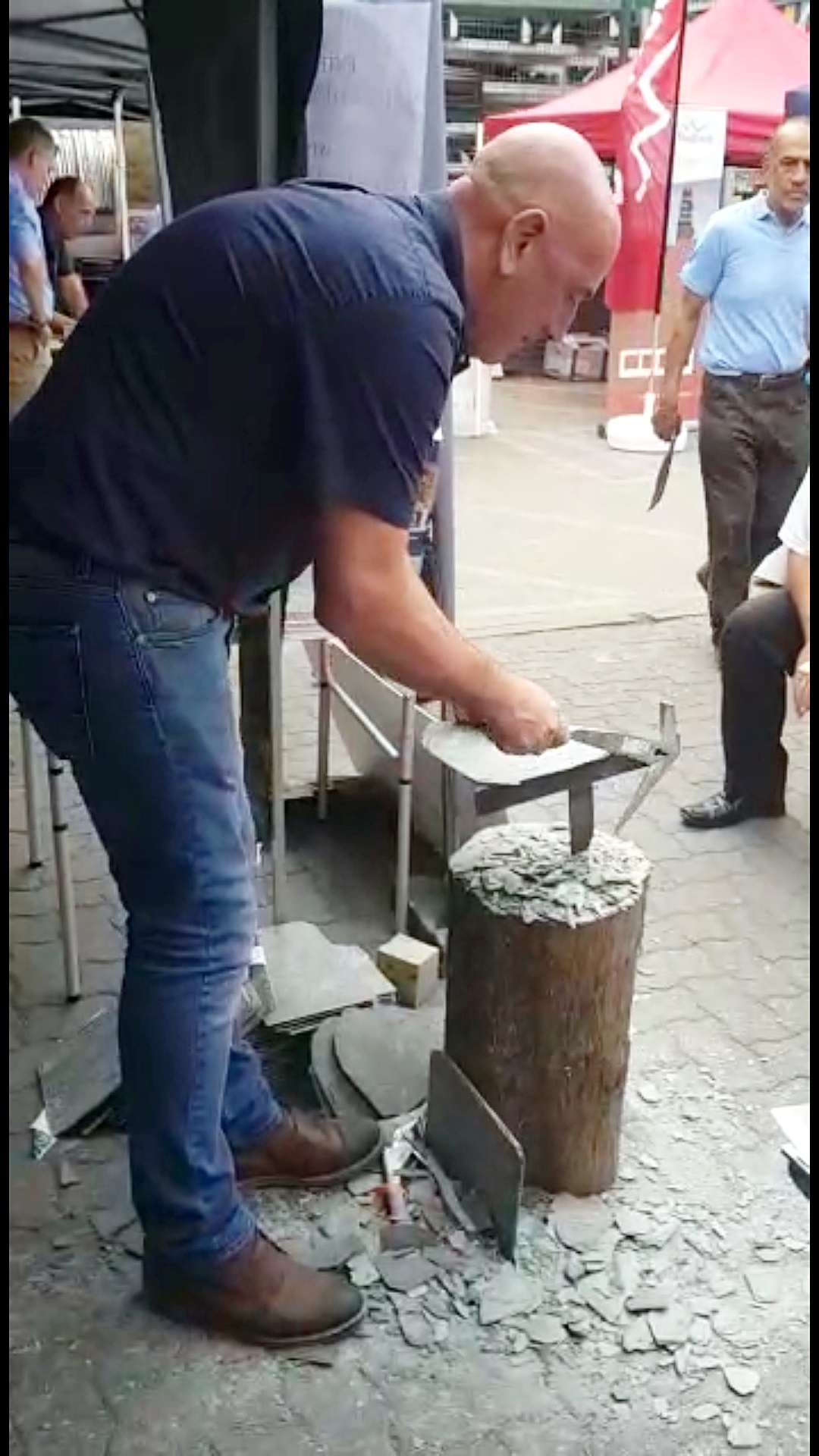As international slate specialists, SSQ has been providing high-quality natural slate and stone products to architects, specifiers, and builders for decades. Our expertise in natural slate extends to all aspects of its use in construction, including weathering and oxidation. This comprehensive guide for aims to shed light on these processes, their implications for slate roofing, and how to manage them effectively in your projects.

What is slate weathering and why does it matter?
Slate weathering is a natural process that occurs when slate is exposed to the environment over time. It can significantly impact the appearance, durability, and performance of slate roofs. Understanding slate weathering is crucial for architects and specifiers to ensure the longevity and aesthetic appeal of their slate roofing projects.
The science behind slate weathering
Slate is a metamorphic rock formed under intense heat and pressure. Its composition includes various minerals, primarily quartz, muscovite, and chlorite. When exposed to the environment, these minerals react differently to weathering agents such as water, air, temperature fluctuations, and biological factors.
The weathering process can be broadly categorised into two types:
Physical weathering: This involves the breakdown of slate due to mechanical forces such as freeze-thaw cycles, thermal expansion and contraction, and wind erosion.
Chemical weathering: This occurs when the minerals in slate react with environmental elements, leading to changes in the slate’s chemical composition.
How does oxidation affect slate roofing?
Oxidation is a specific type of chemical weathering that significantly impacts slate roofing. It occurs when minerals containing iron in the slate react with oxygen and water, forming iron oxides or hydroxides. This process is responsible for the colour changes often observed in weathering slate.
The oxidation process in slate
When slate is exposed to air and moisture, iron-containing minerals within the slate begin to oxidise. This reaction is like the rusting of iron, but it occurs at a much slower rate. The oxidation process can cause the slate to change colour, typically from its original grey to various shades of brown, rust, or even gold.
The rate and extent of oxidation depends on several factors:
- Mineral composition of the slate
- Environmental conditions (humidity, rainfall, temperature)
- Exposure to sunlight
- Roof profile and pitch
Impact on slate appearance and performance
Oxidation can have both aesthetic and functional implications for slate roofs:
Colour changes: The most noticeable effect of oxidation is the change in colour. While some architects and homeowners appreciate the weathered look, others prefer the original grey colour of the slate.
Surface texture: Oxidation can slightly alter the surface texture of the slate, potentially affecting its water-shedding properties.
Durability: In most cases, oxidation does not significantly impact the structural integrity of high-quality slate. However, in some instances, it may lead to slight weakening of the slate over time.
Best practices for managing slate weathering and oxidation
As an architect or specifier, understanding how to manage slate weathering and oxidation is crucial for ensuring the longevity and aesthetic appeal of your roofing projects. Here are some best practices to consider:
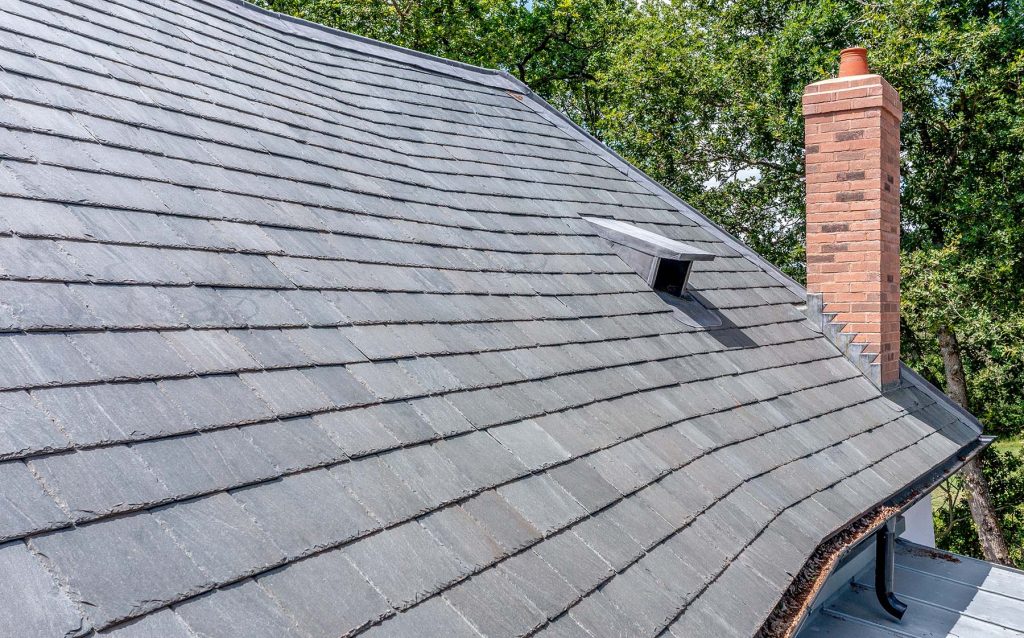
- Choose the Right Slate
Not all slate is created equal. The mineral composition of the slate plays a significant role in its susceptibility to weathering and oxidation. At SSQ, we offer a range of high-quality slates with varying weathering characteristics. Our experts can help you select the most appropriate slate for your specific project requirements.
- Consider the Roof Profile
The roof profile can influence how water interacts with the slate, affecting the rate of weathering and oxidation. Steeper pitches generally allow for better water runoff, potentially reducing the rate of oxidation. When designing slate roofs, consider how the pitch and profile might impact water drainage and exposure to environmental elements.
- Proper Installation Techniques
Correct installation is crucial for minimising weathering and oxidation. Ensure that the slate is installed with appropriate overlap and side laps, proper underlayment and flashing are used, and adequate ventilation is provided in the roof space
Common concerns about slate weathering
Will weathering affect the lifespan of my slate roof?
High-quality slate from reputable sources like SSQ is designed to withstand weathering for decades. While weathering and oxidation may change the appearance of the slate, they typically do not significantly reduce its lifespan when properly installed and maintained.
Can I prevent colour changes due to oxidation?
While it’s not possible to entirely prevent oxidation, selecting slate with low iron content can minimise colour changes.
Choosing the right slate for your project
When selecting slate for your roofing project, consider the desired aesthetic you want for its appearance and ensure the chosen slate meets local building regulations. Also consider the environmental conditions, as the local climate can influence the rate of weathering and oxidation. The thickness and width of the slate can affect its durability and weathering characteristics. The biggest thing you must do, however, is to choose slate from reputable suppliers like SSQ to ensure consistent quality and performance.
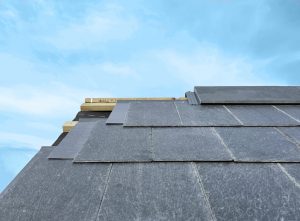
World-class natural slate from SSQ
SSQ’s natural slate stands out as a world-class choice. Our Del Carmen Spanish slate has established itself as a superior alternative to traditional Welsh slate, matching them in both beauty and durability.
Our Argentinian Phyllite Riverstone is a remarkable metamorphic rock, formed when shale endures extreme heat and pressure over hundreds of millions of years, surpasses conventional slate in hardness, density, and strength, while its distinctive ‘phyllitic sheen’ – created by mica particles – adds an unmistakable elegance to any application.
Both Riverstone and Del Carmen slates demonstrate exceptional colour stability, maintaining their original appearance even in the most challenging environmental conditions. This remarkable resistance to fading or discoloration ensures that your roofing investment retains its beauty and integrity for generations to come.

Embrace slate’s natural beauty
Understanding slate weathering and oxidation is crucial for architects and specifiers working with this timeless roofing material.
By selecting high-quality slate, implementing proper installation techniques, and following best practices for maintenance, you can ensure that your slate roof not only withstands the test of time but also ages gracefully, enhancing the aesthetic appeal of your building projects for decades to come.
At SSQ, we’re committed to providing you with the highest quality slate and the expertise needed to make informed decisions about your roofing projects. We also offer a Slate Oxidation Warranty for the length of the product warranty. No other supplier offers this type of guarantee.
Contact or email us today to discuss your specific project needs or to learn more about our range of natural slate products. Our team of experts are ready to help you navigate the complexities of slate weathering and oxidation, ensuring your roofing projects stand the test of time.
Frequently asked questions:
How long does it take for slate to start weathering?
There is no set timetable for when the weathering process can begin, but noticeable changes may take several months to years, depending on the slate quality and environmental conditions.
Does weathering affect the water-resistance of slate roofs?
High-quality slate maintains its water-resistance properties. The slight texture changes due to weathering typically don’t compromise the roof’s ability to shed water.
What is Oxidation?
Oxidation occurs when slate is exposed to air and moisture over time. This process can cause the slate to change colour, typically resulting in a rusty or brownish appearance. It’s mostly an aesthetic issue, but it can sometimes lead to weakening of the slate in severe cases.
Does natural slate fade or darken over time?
Quality natural slate is the preferred option for restoring period properties as it will not fade over time. Our Riverstone, Del Carmen, Domiz and Matacouta slates will not fade or become discoloured even when exposed to the harshest environments.
